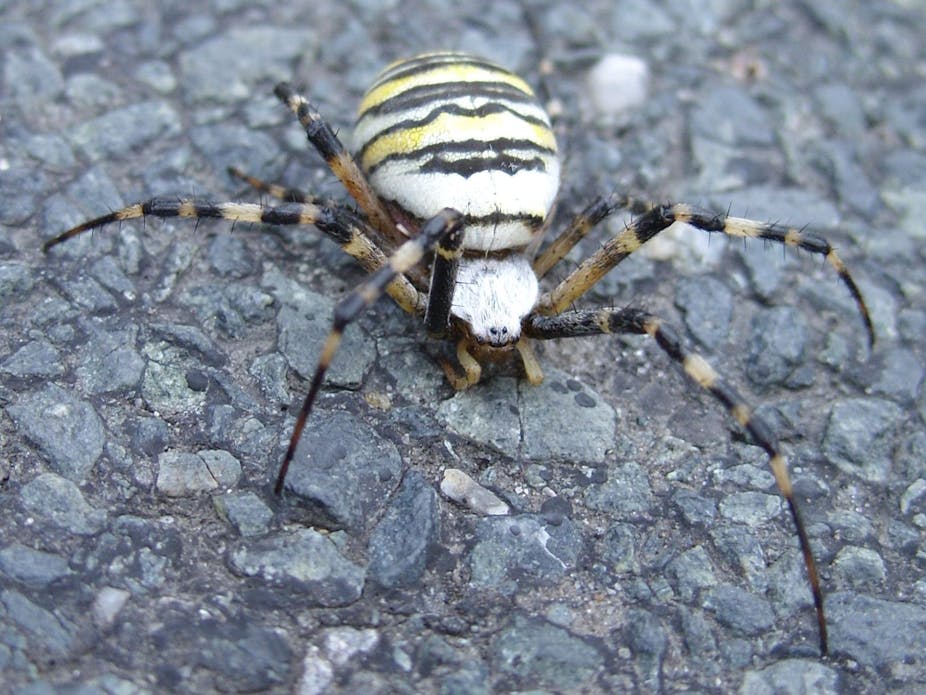When it comes to selecting a mate, females are traditionally thought of as the choosy sex; males, meanwhile, aren’t thought to be particularly picky.
This makes sense for many species – the sex that invests the most in offspring is expected to take the most care in selecting their mate.
A sweeping look at the animal kingdom shows that females generally produce few, large and expensive gametes (eggs) and often engage in extended parental care that can be expensive, both in time and energy. On the other hand, males tend to produce many, cheap gametes (sperm) and have minimal contribution to parental care.
Given females of most species have a comparatively limited reproductive output (compared with males), it makes sense for females to be choosier when selecting a mate. That is, a female will look to maximise her limited opportunities to mate, by mating with a “high quality” male – one who will contribute genes that will increase the chances of her offspring surviving and reproducing themselves.
But new research, published in Frontiers in Zoology, is starting to show just how choosy males of many species can be when selecting their potential partners.

Choosy is as choosy does
While male mate choice has been studied for many years, its relative importance in the evolution of mating systems has only recently started to be understood.
Some of the most extreme examples of male “choosiness” come from systems that exhibit sex-role reversal. That is, when males and females take on roles traditionally filled by the opposite sex:
Male bronze-winged jacanas incubate and care for chicks, while females are heavier than males and are socially dominant.
Male pipefish also provide all parental care and don’t appear to re-mate until the eggs have hatched. Female pipefish are larger than males and may mate with several males in succession.
It would seem that when males provide parental care, their future reproductive output becomes limited. And when males become limited in reproductive output – as females normally are – they become more selective about who they mate with.
But males don’t have to provide parental care to exhibit choosiness for a mate.
Spider mating behaviour
The study in Frontiers in Zoology, by German behavioural biologist Klaas Welke and colleagues, investigates the mating strategies of the cannibalistic wasp spider (Argiope bruennichi), a species that creates an orb-shaped web and that is native to parts of Europe, Asia and Northern Africa.
Males of many species of orb-web spider (including the wasp spider) can only mate twice, at most, in their lifetime. This is because males transfer sperm to the female via two appendages, the pedipalps, each of which can only be used once. Male orb-web spiders also have the added danger of being eaten by their mate immediately after copulation.
The “good” news? As well as delivering sperm, a pedipalp also acts as a mating plug. The tip of the pedipalp can break off inside the female’s genital tract, preventing her from copulating with another male later on.

In this way, the pedipalp can improve the male orb-web spider’s chance of fathering offspring.
With the opportunity to mate only twice, male orb-web spiders have only two possible mating strategies:
1) mate with just one female (monogyny)
2) mate with two different females (bigyny)
The work of Welke and colleagues provides some insight into how male orb-web spiders select between these alternative mating strategies. They found that the wasp spider will mate twice with the same female if she is of “good quality”. That is, a female that is likely to produce offspring that will survive and reproduce themselves and hence pass on the male’s genes.
By mating twice with one female, the male can improve his chances of being the father of her offspring, compared with if he only mated once and left a window of opportunity for a second male.
When a male spider mates only once with a female, he can only block one of her paired genital openings (epigynum) with his pedipalp. The other side of her epigynum is left un-plugged, leaving another male free to copulate with her.

The wishlist
So if male orb-web spiders are choosing to mate twice with the one, high-quality female, what are those males looking for in a female? Well, according to Welke and colleagues, males prefer virgin females as mates.
By mating with a virgin female, male spiders have the potential to monopolise the paternity of the female’s potential offspring, as he can block both sides of the female’s genital tract with a mating plug, removing other males from the picture.

This preference for virgin females by males has been shown in several spider species, not just the wasp spider.
Another factor for male spiders looking for a mate is the weight of females – a good indication of fecundity (reproductive potential). Quite simply, the heavier a female is, the more eggs she has.
A male orb-web spiders wants to mate with females with lots of eggs, as it maximises his potential reproductive fitness – that is, the number of offspring he could have.
And given he’ll likely die in the process, it’s maybe not a bad thing to be so picky.

